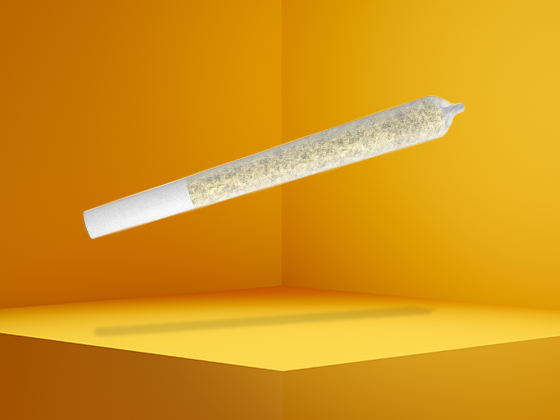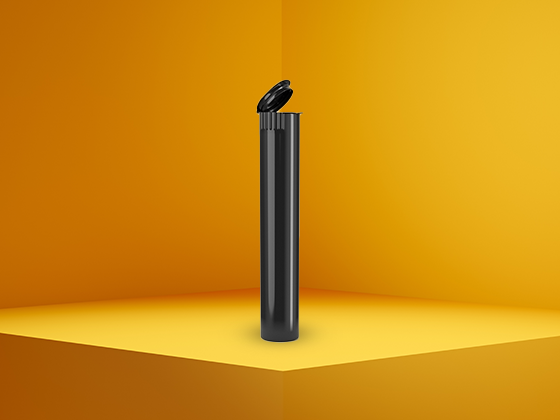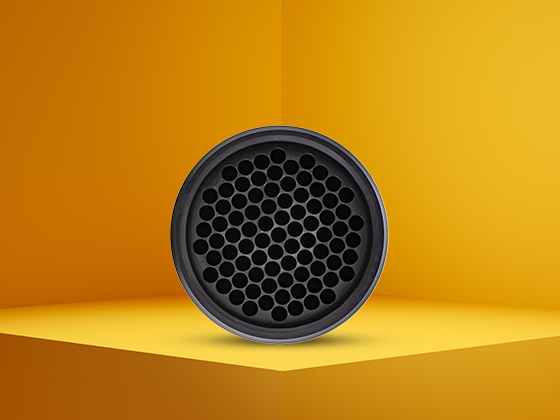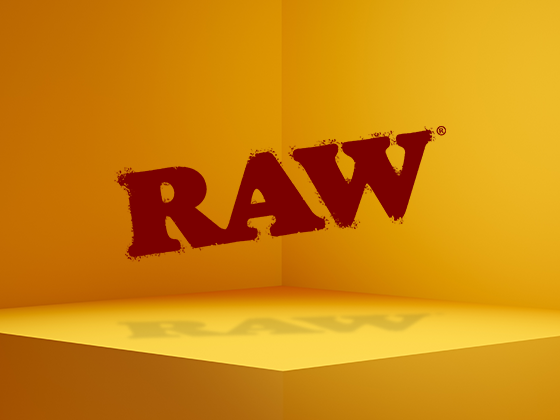Resources
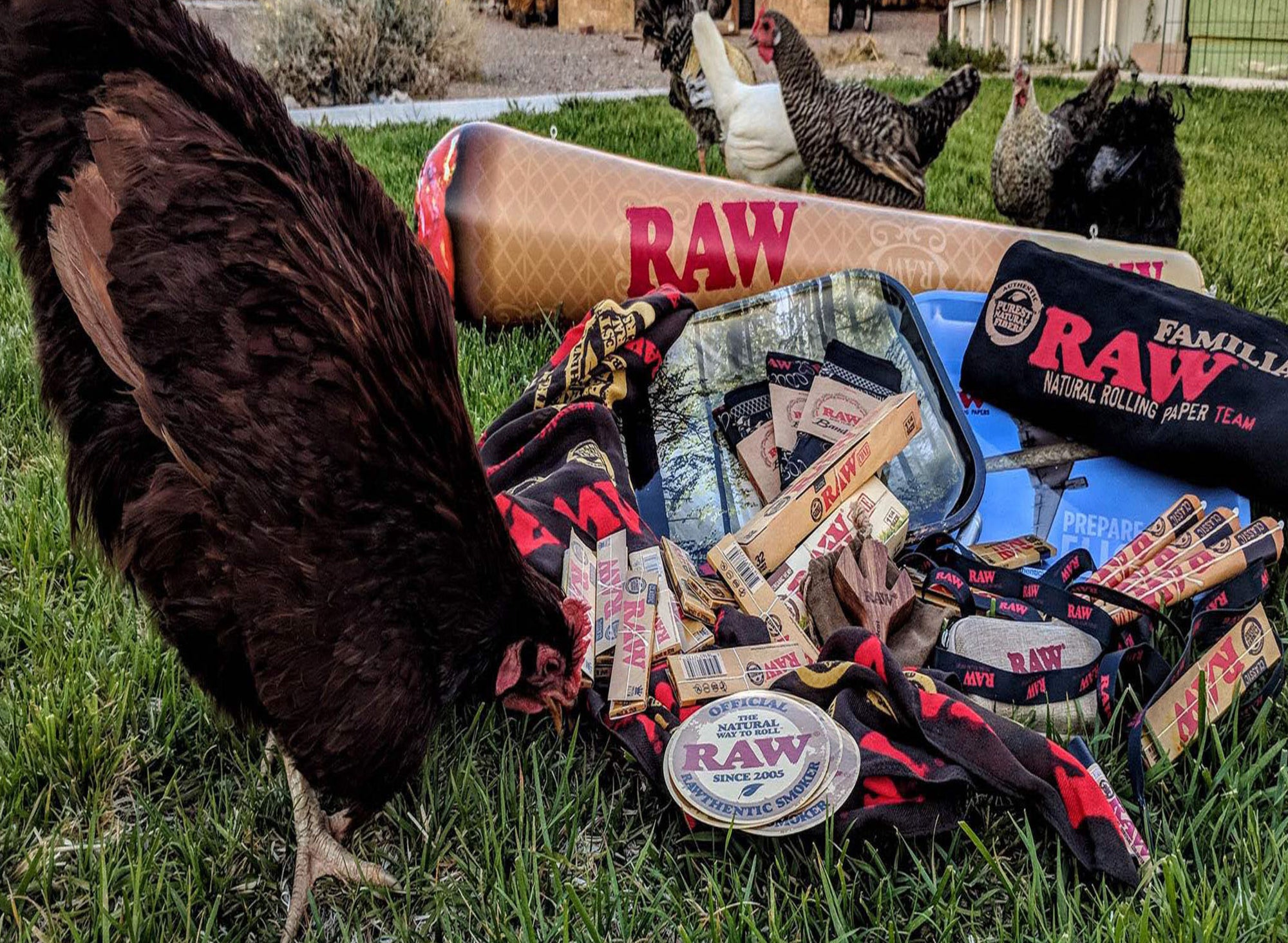
branding
Understanding RAW Image Format: Distribution and Authenticity
Table of Contents
Understanding the RAW Brand: Origins and Philosophy
Authentic RAW Distribution Channels: Where to Find Real Products
Spotting Authentic RAW Products: Key Identifiers
The RAW Product Range: Beyond Rolling Papers
The Counterfeits Market: Protecting Yourself from Fake RAW Products
The Future of RAW Distribution: Innovation and Accessibility
Understanding RAW Image Format: Distribution and AuthenticityThe RAW brand has established itself as a cornerstone in the rolling paper industry, known for its unbleached, unrefined products that appeal to purists and enthusiasts alike. As the brand's popularity has soared, so has the importance of understanding RAW distribution channels and how to identify real RAW products in a market increasingly saturated with counterfeits.Understanding the RAW Brand: Origins and PhilosophyRAW was founded with a commitment to creating pure, unrefined products that maintain the integrity of natural materials. The company's ownership and global presence have expanded significantly over the years, yet they've maintained their core philosophy of "RAWthentic" products that are additive-free and environmentally conscious.This dedication to purity isn't just marketing; it's embedded in every aspect of their manufacturing process. The brand's commitment to quality control ensures that authentic products maintain consistent standards across all distribution channels.Authentic RAW Distribution Channels: Where to Find Real ProductsFinding real RAW products requires understanding legitimate distribution networks. Authorized retailers, both physical and online, represent the safest channels for purchasing authentic RAW merchandise. Our guide to finding RAW skins and gift sets online provides comprehensive information on verified sellers.When exploring options for premium rolling supplies, many consumers also consider alternatives from other reputable brands. At Smoke Cones, we offer high-quality pre-rolled cones from Futurola that complement the natural smoking experience many RAW enthusiasts appreciate.Official Distribution NetworksRAW maintains strict control over its distribution channels to ensure product authenticity. Their products typically move through:
Authorized wholesalers
Licensed smoke shops and dispensaries
Official online retailers
Select convenience stores with proper certification
This controlled distribution helps maintain product integrity and reduces the chance of counterfeit items entering the market.Highlight: Always purchase RAW products from authorized retailers to ensure authenticity and support legitimate distribution channels.Spotting Authentic RAW Products: Key IdentifiersIdentifying real RAW products requires attention to detail. Our guide to RAWthentic products outlines several key identifiers:Packaging VerificationAuthentic RAW packaging features specific elements:
Precise color matching (not overly bright or dull)
Clear, crisp printing without blurriness
Proper alignment of all graphic elements
Accurate spelling and consistent font usage
Unique batch codes that can be verified
Product Quality IndicatorsThe products themselves also provide clues to authenticity:
Consistent coloration throughout papers
Even thickness and texture
Proper watermarks visible when held to light
Clean cutting with no rough edges
Natural smell without chemical odors
The RAW Product Range: Beyond Rolling PapersRAW's product line extends well beyond basic rolling papers, encompassing a comprehensive ecosystem of smoking accessories. Understanding this range helps consumers identify potential counterfeits that may not align with official offerings.The brand's commitment to natural living is reflected across their product line, as detailed in our exploration of embracing the RAW life. This philosophy extends to their distribution practices, which prioritize environmental responsibility and sustainable packaging.The Counterfeits Market: Protecting Yourself from Fake RAW ProductsAs RAW's popularity has grown, so has the counterfeit market. These fake products not only potentially contain harmful additives but also undermine the brand's quality standards and ethical commitments.Common Counterfeit Red Flags
Significantly lower pricing than standard market rates
Packaging inconsistencies or poor print quality
Missing or incorrect security features
Unusual distribution channels or unauthorized sellers
Product performance issues (uneven burning, off tastes)
RAW has implemented several anti-counterfeiting measures, including QR code verification systems and specialized printing techniques that are difficult to replicate. Our article on RAW brand authenticity provides detailed guidance on using these tools.The Future of RAW Distribution: Innovation and AccessibilityRAW continues to evolve its distribution strategies to combat counterfeiting while improving accessibility. Digital verification systems, blockchain tracking, and expanded authorized retailer networks represent the next frontier in ensuring that consumers receive genuine products.As the market for natural smoking accessories grows, RAW's commitment to authenticity serves as a model for the industry. By supporting legitimate distribution channels and learning to identify real RAW products, consumers not only protect themselves but also support the ethical and environmental standards that define the brand.Whether you're a longtime enthusiast or new to the world of RAW, understanding distribution channels and authenticity markers ensures you experience these products as they were intended. And remember, for those exploring options beyond RAW, quality alternatives like those in our curated collections provide additional choices for the discerning consumer.
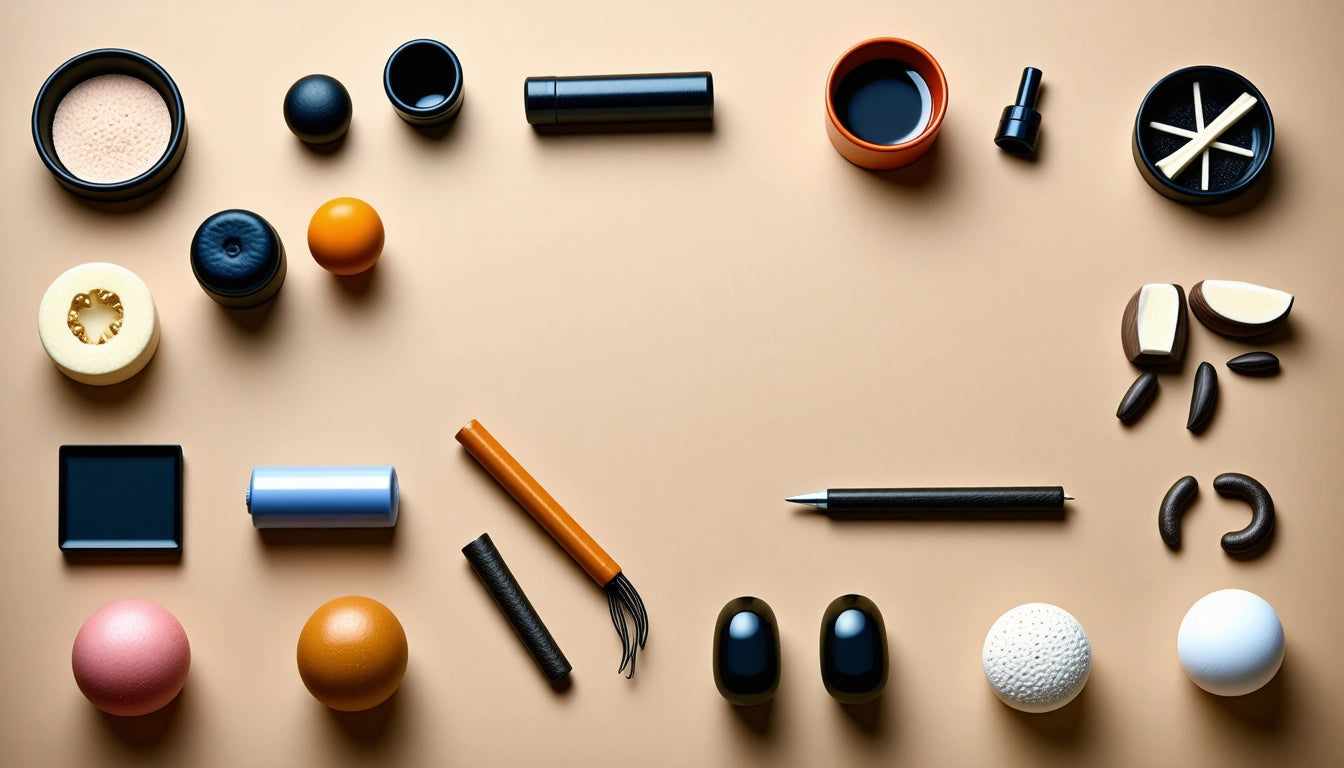
flower
Mastering the Art of Even and Slow-Burning Joints: Tips and Solutions
Table of Contents
Understanding Joint Combustion: The Science Behind the Burn
Common Causes of Uneven Burning Joints
Proper Rolling Techniques for Even Burns
Quality Materials Matter: Papers, Filters, and Flower
Slow-Burning Solutions: Making Your Joint Last Longer
Fixing Burning Issues Mid-Session
Advanced Strategies for Perfect Joint Combustion
Few things are more frustrating than watching your carefully rolled joint burn unevenly or too quickly. Whether you're wondering why your joints burn unevenly or searching for ways to make a joint burn slower, this guide covers the science, techniques, and practical solutions to achieve that perfect, even burn every time.Understanding Joint Combustion: The Science Behind the BurnBefore diving into solutions, it helps to understand what's actually happening when a joint burns. Cannabis typically combusts at temperatures between 350-450 °F (175-230 °C), though what temperature a joint burns at can vary based on several factors including airflow, moisture content, and material density.When a joint burns unevenly, it's often because one side is receiving more oxygen or contains material that's packed differently than the rest. This creates what's commonly called "canoeing" or "running" – when one side burns faster than the other, creating an uneven edge that resembles a canoe.As explained in this detailed guide on preventing canoeing, understanding airflow dynamics is crucial to maintaining an even burn.Common Causes of Uneven Burning JointsIf you're constantly asking "why do my joints burn unevenly?" consider these common culprits:
Uneven grinding of cannabis flower
Improper packing (too tight or too loose)
Inconsistent rolling technique
Wind or external air currents
Moisture variations in your cannabis
Low-quality rolling papers
Improper lighting technique
Each of these factors can significantly impact how evenly your joint burns. For instance, cannabis that's too moist will burn slowly and unevenly, while overly dry cannabis burns too quickly.Highlight: The most common reason joints burn unevenly is improper material distribution during rolling. Ensuring even grinding and consistent packing pressure solves most burning issues.Proper Rolling Techniques for Even BurnsLearning how to get a joint to burn evenly starts with proper rolling technique. Mastering joint rolling techniques involves several key steps:The Perfect GrindAim for a medium-fine, consistent grind. Too coarse and you'll get air pockets; too fine and it might restrict airflow. A quality grinder is worth the investment for achieving consistency.Even DistributionBefore rolling, distribute your ground cannabis evenly along the paper. Any lumps or thin spots will cause uneven burning later.Proper Packing PressureThe ideal joint is firm enough to maintain structure but not so tight that air can't flow through. Practice finding the sweet spot between too loose (burns too fast) and too tight (difficult to draw).As detailed in this comprehensive joint rolling guide, mastering these fundamentals creates the foundation for an evenly burning joint.Quality Materials Matter: Papers, Filters, and FlowerThe materials you use significantly impact how your joint burns. For those seeking to make joints burn slower and more evenly, consider upgrading your supplies:Rolling PapersThinner papers generally burn more evenly but faster. Thicker papers or those made from hemp or rice can burn more slowly. Brands like RAW, Elements, and OCB are popular for their consistent burning properties.Proper StorageKeeping your cannabis at the right humidity level is crucial. Too dry and it burns too quickly; too moist and it burns unevenly. Proper storage containers or quality mylar bags designed for cannabis storage can help maintain optimal moisture levels for a perfect smoke.Quality Filters/CrutchesA well-made filter improves airflow and provides structure to your joint. Pre-made filter tips ensure consistency, though you can make your own from appropriate cardstock.Using quality materials from the start prevents many common burning issues before they begin.Slow-Burning Solutions: Making Your Joint Last LongerIf you're specifically wondering how to make a joint burn slower, try these proven techniques:
Honey Method: Lightly coat the outside of your rolled joint with a thin layer of honey, then let it dry. The sugar creates a slower burn.
Double-Wrapping: Using two rolling papers creates a thicker barrier that burns more slowly.
Inside-Out Rolling: This technique (also called backrolling) uses less paper, creating a smoother, slower burn.
Proper Moisture Content: Slightly moister cannabis burns more slowly, though too moist will cause uneven burning.
As explained in this guide on preserving joints, these methods can significantly extend your smoking session.Fixing Burning Issues Mid-SessionEven with perfect preparation, sometimes joints start burning unevenly. Here's how to stop a joint burning incorrectly mid-session:The Lick MethodIf one side is burning faster, lightly dampen (with saliva) the paper on the fast-burning side. This temporarily slows that side, allowing the slower side to catch up.Rotation TechniqueConsistently rotating the joint while smoking helps maintain even burning by distributing the heat uniformly around the circumference.Ash ManagementRegularly ash your joint to remove the burnt material that can affect airflow and cause uneven burning.These quick fixes can salvage an unevenly burning joint without needing to restart.Advanced Strategies for Perfect Joint CombustionFor those seeking to truly master joint combustion, these advanced techniques can help achieve the perfect burn:Temperature and Environment Control: Smoking in a wind-protected area with moderate humidity provides optimal burning conditions.Multi-Material Joints: Incorporating concentrates like wax into joints can alter burning characteristics, often slowing the burn rate while increasing potency.Specialized Rolling Methods: Techniques like the plumber's joint (with a central airway) or cross-joint construction can create unique burning profiles for specific experiences.Paper Alternatives: Hemp wraps, corn husks, or other natural wrapping materials offer different burning characteristics that may better suit your preferences.By understanding the science behind combustion and implementing these techniques, you can transform your smoking experience from frustrating to fantastic. Remember that practice makes perfect, and even expert rollers occasionally encounter burning issues. The key is to learn from each roll and continuously refine your technique.

flower
Mastering the Art of Smoking a Joint: Techniques and Tips
Table of Contents
Joint Smoking Basics: Getting Started
Proper Inhalation Techniques for Maximum Enjoyment
Ash Management and Interpretation
Joint Preservation: How to Put Out and Save for Later
Advanced Techniques and Variations
Smoking Etiquette and Best Practices
Whether you're new to cannabis or looking to refine your technique, knowing how to smoke a joint properly can enhance your experience and help you get the most out of your session. From proper inhalation to ash management, this guide covers everything you need to know about the art and science of joint smoking.Joint Smoking Basics: Getting StartedBefore diving into advanced techniques, it's important to understand the fundamentals of how to smoke a joint. A properly rolled joint should be firm but not too tight, allowing for smooth airflow while burning evenly. According to comprehensive joint guides, the key to a good smoking experience begins with quality preparation.To start smoking:
Hold the joint between your thumb and index finger near the filter or crutch
Light the twisted end (tip) with a lighter or hemp wick
Rotate the joint while lighting to ensure an even burn
Once lit, take a small initial puff to establish the burn
For those who prefer pre-rolls, specific techniques can help ensure a smooth experience without the rolling work.Proper Inhalation Techniques for Maximum EnjoymentLearning how to inhale a joint properly is crucial for both enjoyment and efficiency. Many newcomers make the mistake of not inhaling deeply enough or holding the smoke too long.The Two-Step Inhale MethodFor the best results when learning how to inhale joint smoke:
Draw the smoke into your mouth first (like sipping through a straw)
Then take a second breath of fresh air to push the smoke into your lungs
Hold briefly (1-2 seconds is sufficient) then exhale slowly
This technique allows you to taste the terpenes while effectively absorbing the active compounds. Research on smoking methods indicates that longer holds don't necessarily increase effects but may increase irritation.Proper storage is just as important as proper smoking technique. Many enthusiasts use high-quality storage solutions to maintain freshness and potency of their flower before rolling, ensuring the best possible joint smoking experience.Ash Management and InterpretationWhat Does Black Ash Mean in a Joint?Ash color can tell you a lot about your cannabis and how well it's burning. White or light gray ash typically indicates properly cured cannabis and a clean burn. Black ash, however, often suggests:
Moisture content is too high
Incomplete curing of the cannabis
Presence of residual nutrients or pesticides
Poor burning due to tight rolling
How to Ash a Joint ProperlyTo ash a joint without damaging it:
Gently tap the joint against an ashtray when ash builds up
Avoid pressing or crushing the tip, which can affect airflow
For stubborn ash, a gentle twist while tapping can help
Mastering even burns can help prevent uneven ashing and improve the overall experience.Joint Preservation: How to Put Out and Save for LaterKnowing how to put out a joint mid smoke is an essential skill for conserving your cannabis:
Gently tap or blow on the cherry (lit end) until it stops glowing
Avoid crushing or twisting too aggressively, which can damage the joint
Store in an airtight container to preserve freshness and prevent odor
When you're ready to relight, gently scrape off the charred tip before lighting to remove the stale taste. Preservation techniques can extend the life of your joints and maintain quality between sessions.Advanced Techniques and VariationsHow to Smoke Resin in a JointFor those interested in how to smoke resin in joint form, there are several approaches:
Adding concentrates to the inside of a joint (known as "twaxing")
Applying a thin layer to the outside paper
Mixing resin with flower for enhanced potency
When incorporating concentrates, proper techniques ensure even burning and prevent wastage.Filterless SmokingWhile filters (or crutches) are common, some prefer filterless joints. If you're exploring rolling without filters, be aware that technique adjustments are necessary to prevent loose cannabis from entering your mouth.Smoking Etiquette and Best PracticesThe best way to smoke a joint isn't just about technique but also about etiquette and safety:
Puff, puff, pass: Take two hits before passing to maintain session flow
Avoid "camping" (holding the joint while talking)
Don't wet the tip excessively with saliva ("lip the joint")
Be mindful of proper disposal to prevent fire hazards
Know when to stop and be aware of your limits
Safety considerations extend beyond the session itself. Understanding timing between consumption and activities like driving is crucial for responsible use.By mastering these techniques and understanding the nuances of how to properly smoke a joint, you'll enhance not only your personal experience but also become a more considerate participant in social smoking settings. Remember that practice leads to perfection, and each session is an opportunity to refine your approach to this time-honored consumption method.
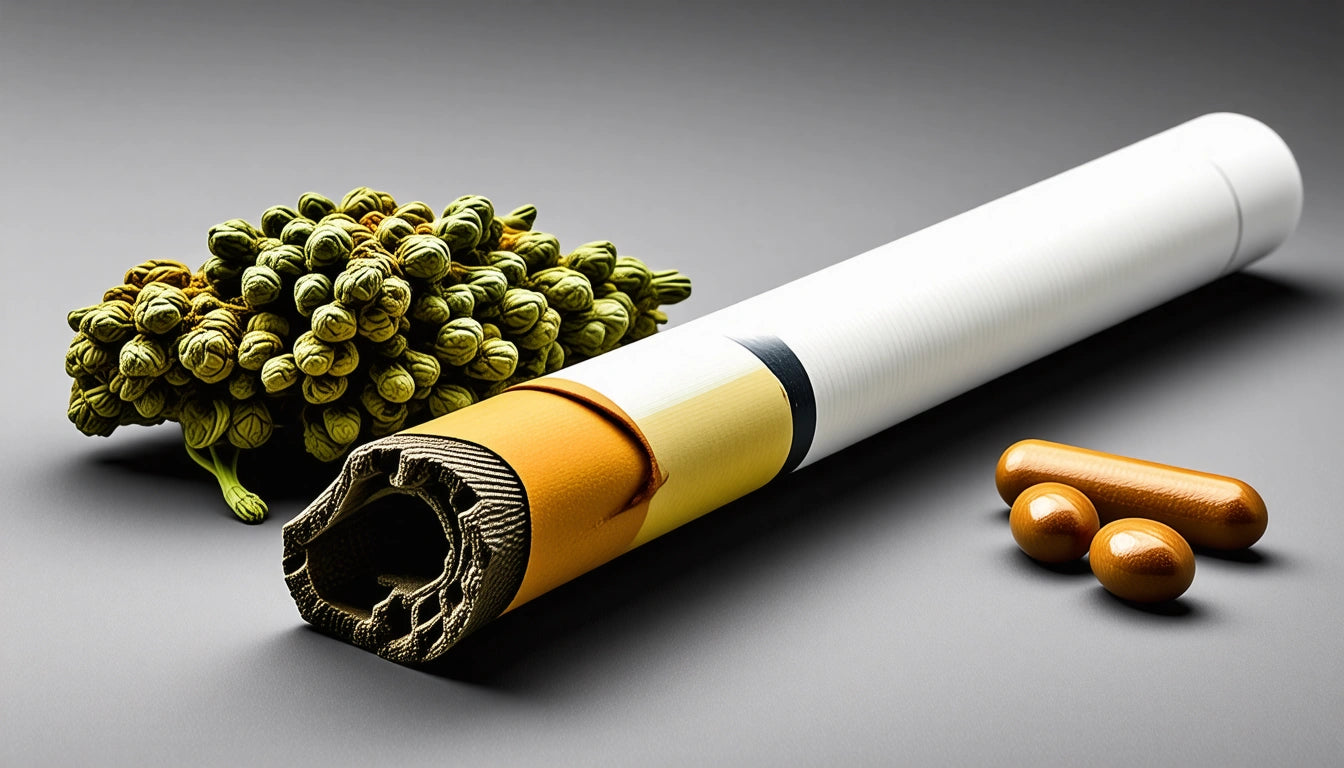
flower
Understanding the Basics of Unlit and Lit Joints: Odor and Preservation
Table of Contents
Joint Odor Factors: Do Joints Smell When Not Lit?
Saving Partially Smoked Joints: Techniques and Considerations
Storage Solutions for Joints: Both Fresh and Partially Smoked
Preserving Joint Quality: Humidity and Temperature Control
Odor Management Strategies for Cannabis Users
Cannabis enthusiasts often have questions about joint management, particularly regarding odor control and preservation. Two common questions arise: do joints smell when not lit, and can you save a joint after you light it? Understanding these aspects helps consumers enjoy their products discreetly and economically while maintaining quality.Joint Odor Factors: Do Joints Smell When Not Lit?Unlit joints do emit an odor, though significantly less potent than when burning. The smell comes primarily from terpenes, aromatic compounds naturally present in cannabis. These volatile molecules easily evaporate at room temperature, creating the characteristic scent even without combustion.Several factors influence how much an unlit joint smells:
Strain potency and terpene profile
Freshness of the cannabis
Quality and thickness of the rolling paper
Environmental conditions like temperature and humidity
Higher-quality cannabis typically contains more terpenes, resulting in stronger aromas. Strains with dominant myrcene, limonene, or pinene terpenes are particularly fragrant even when unlit. According to research on joint smoking methods, the paper type can also impact odor retention and release.Saving Partially Smoked Joints: Techniques and ConsiderationsYes, you can save a joint after lighting it, though with some caveats. Once lit, the combustion process changes the chemical composition of the remaining cannabis, altering both flavor and potency. However, proper extinguishing and storage techniques can preserve much of the remaining material.Proper Extinguishing MethodsTo save a partially smoked joint effectively:
Gently tap or twist the lit end until the ember is fully extinguished
Avoid using water or saliva which can damage the paper and create mold risks
Let the joint cool completely before storage
Trim any charred paper with scissors for a cleaner relight
Mastering proper joint lighting techniques from the beginning can also make saving them easier later, as evenly burned joints are simpler to extinguish and preserve.Highlight: While unlit joints do smell, proper storage containers can virtually eliminate odor leakage while preserving freshness for days or weeks.Storage Solutions for Joints: Both Fresh and Partially SmokedEffective storage is crucial for both odor control and preservation. For unsmoked joints, airtight containers maintain freshness and contain smells. For partially smoked joints, specialized solutions prevent both odor leakage and degradation.Optimal storage options include:
Glass doob tubes with rubber seals
Smell-proof cases with activated carbon filters
Dedicated joint containers with humidity control
Mylar bags with resealable zippers
For those concerned about discretion, specialized mylar storage bags offer excellent odor containment while protecting joints from crushing or moisture damage. These bags use multiple layers to trap aromas inside while maintaining freshness, making them ideal for both new and partially smoked joints.Preserving Joint Quality: Humidity and Temperature ControlBeyond basic storage, maintaining optimal environmental conditions significantly extends joint shelf life and quality. The two critical factors are humidity and temperature control.Humidity ConsiderationsCannabis joints store best at 59-63% relative humidity. Too high, and mold becomes a risk, especially for partially smoked joints. Too low, and the material becomes brittle and harsh when smoked. Consider these options:
Humidity control packs (58% or 62%)
Terracotta or wooden humidifiers for natural regulation
Avoid plastic bags which can create condensation
According to proper joint storage guidelines, maintaining consistent humidity is particularly important for preserving terpenes, which directly impacts both aroma and therapeutic effects.Temperature ManagementStore joints in cool, dark places between 60-70 °F (15-21 °C). Excessive heat accelerates terpene evaporation, increasing odor while decreasing quality. Refrigeration is generally unnecessary and can introduce unwanted moisture, though freezing is occasionally used for very long-term storage.Odor Management Strategies for Cannabis UsersBeyond storage solutions, several complementary strategies help manage cannabis odors effectively:
Use carbon filters or air purifiers in storage areas
Add naturally absorbent materials like coffee beans or activated charcoal near storage locations
Consider odor-neutralizing sprays specifically formulated for cannabis
Store joints separately from other cannabis products to prevent cross-contamination
For partially smoked joints, the odor challenge is greater due to residual combustion compounds. Learning proper burning techniques can reduce these residual smells by promoting complete combustion during use.When relighting saved joints, expect a slightly harsher flavor profile and stronger odor upon ignition. Using proper lighting techniques to prevent canoeing helps minimize these effects by ensuring even burning when resuming consumption.With proper handling, storage, and odor management techniques, cannabis consumers can maintain discretion while maximizing the lifespan of their products, whether fresh or partially consumed. The key is understanding the physical properties of cannabis and implementing appropriate containment strategies for each situation.
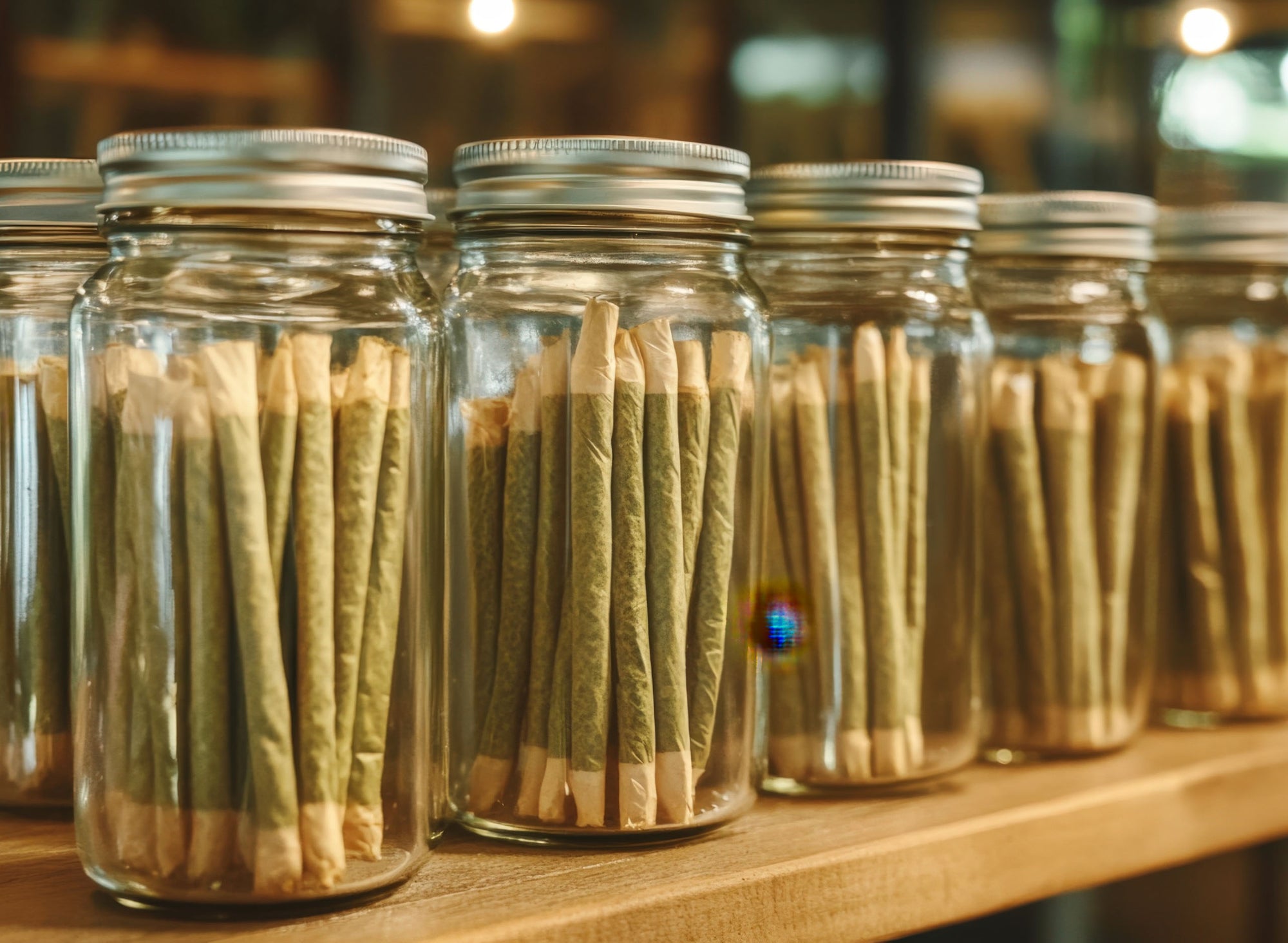
business tips
Comprehensive Guide to RAW Cones: Exploring Various Pack Sizes and Pricing
Table of Contents
Understanding RAW Cones: Quality and Appeal
Small Pack Options: 3 Pack and 20 Pack RAW Cones
Medium Pack Options: 50 Pack and 100 Pack RAW Cones
Bulk Pack Options: 1000 Pack and 1400 Pack RAW Cones
Size Variations: 1 1/4 Cones and Other Dimensions
Pricing Considerations for Different RAW Cones Packs
Packaging Innovations and Industry Trends
nnComprehensive Guide to RAW Cones: Exploring Various Pack Sizes and PricingnnRAW cones have revolutionized the pre-roll industry with their natural, unrefined paper and convenient ready-to-fill design. Whether you're a casual consumer or a business owner looking for wholesale options, understanding the various pack sizes and pricing structures can help you make informed purchasing decisions. This guide explores everything from small 3-pack options to massive 1400 pack RAW cones bulk purchases.nnUnderstanding RAW Cones: Quality and AppealnnRAW cones are made from unbleached, natural fibers that provide a clean, smooth smoking experience. Their popularity stems from several key features:nnnAll-natural materials with no added chemicalsnPre-rolled convenience with filter tips includednVarious sizes to accommodate different preferencesnConsistent quality across all pack sizesnnnAccording to our comprehensive overview, these cones maintain the same quality standards whether purchased in small quantities or bulk packages.nnSmall Pack Options: 3 Pack and 20 Pack RAW ConesnnFor occasional users or those wanting to try RAW cones for the first time, smaller pack options provide an excellent entry point.nnRAW Cones 3 Pack Price and AvailabilitynnThe RAW cones 3 pack price typically ranges from $2-$5, depending on the retailer and cone size. These small packs are perfect for:nnnFirst-time users wanting to sample the productnOccasional smokers who don't need larger quantitiesnGift options or travel-friendly portionsnnn20 Pack RAW Cones: The Popular Middle GroundnnThe 20 pack RAW cones option represents one of the most popular choices for regular consumers. Priced between $10-$20 depending on size and retailer, this quantity offers a good balance between convenience and value. As detailed in our guide on where to purchase RAW cones, these packs are widely available at smoke shops, convenience stores, and online retailers.nnMedium Pack Options: 50 Pack and 100 Pack RAW ConesnnMoving into medium quantities, the 50 and 100 pack options provide better value for regular users and small businesses.nnRAW Cones 50 Pack: Value and ConveniencennThe 50 pack strikes a balance between bulk savings and manageable quantity. These packs typically cost between $25-$35, representing a significant per-unit savings compared to smaller packs.nnRAW Cones 100 Pack: Popular Bulk OptionnnThe RAW cones 100 pack is where consumers start seeing substantial savings. Priced between $45-$65 depending on the size and retailer, this option is popular among:nnnRegular consumers looking for better valuenSmall businesses starting to offer pre-rollsnSocial smokers who frequently share with friendsnnnThe 100 pack option is available in various sizes, with the RAW cones 1 1/4 100 pack being particularly popular for its versatile, standard size that suits most preferences.nnnHighlight: When purchasing RAW cones in larger quantities like 100 packs, the per-unit cost can drop by 30-40% compared to buying multiple small packs, making it significantly more economical for regular users.nnnBulk Pack Options: 1000 Pack and 1400 Pack RAW ConesnnFor commercial operations and businesses, the true bulk options provide maximum value.nn1000 Pack RAW Cones: Commercial ScalennThe 1000 pack RAW cones option represents a major jump into commercial quantities. Priced between $250-$350 depending on size and supplier, these large packs are designed for:nnnDispensaries offering pre-rollsnManufacturers creating branded productsnEvents and large social gatheringsnnn1400 Pack RAW Cones: Maximum Bulk SavingsnnThe 1400 pack RAW cones option represents one of the largest standard bulk packages available. These massive packs offer the best per-unit price, typically ranging from $350-$450. At this quantity, the per-cone cost can be reduced by as much as 60-70% compared to retail pricing.nnFor businesses considering these larger quantities, our professional packaging solutions can help maintain product freshness and presentation quality, especially important when dealing with inventory that may be stored for longer periods before use.nnSize Variations: 1 1/4 Cones and Other DimensionsnnRAW cones come in multiple sizes to suit different preferences and occasions:nnn
1 1/4 Size: The most popular standard size (83mm)n
King Size: Larger option for longer sessions (110mm)n
Lean Size: Slimmer option for lighter sessionsn
Mini Size: Smaller option for quick sessionsnnnThe RAW cones 1 1/4 100 pack is particularly popular as this size represents the sweet spot for most consumers. As explained in our detailed guide on 1 1/4 cones, this size offers versatility and efficiency for most usage scenarios.nnPricing Considerations for Different RAW Cones PacksnnWhen evaluating RAW cones pricing across different pack sizes, several factors influence the final cost:nnn
Quantity discounts: Per-unit price decreases significantly with larger packsn
Size variations: Larger cone sizes generally cost more per unitn
Special editions: RAW Black, Organic, or other specialty lines may carry premium pricingn
Purchase channel: Wholesale channels offer better pricing than retailnnnFor businesses, understanding the differences between RAW product lines can help optimize inventory and pricing strategies.nnPackaging Innovations and Industry TrendsnnThe pre-roll cone industry continues to evolve, with RAW leading many packaging innovations. Recent trends include:nnnSustainable packaging options with reduced environmental impactnHumidity-controlled packaging for extended freshnessnBranded packaging solutions for businessesnChild-resistant options for regulatory compliancennnFor businesses scaling their pre-roll operations, investing in proper storage and efficient filling techniques can maximize the value of bulk RAW cone purchases.nnWhether you're purchasing a small 3-pack for personal use or investing in 1400 pack RAW cones for a commercial operation, understanding the various options, sizes, and price points ensures you get the best value for your specific needs. As the market continues to grow, RAW's commitment to quality and variety keeps them at the forefront of the pre-rolled cone industry.
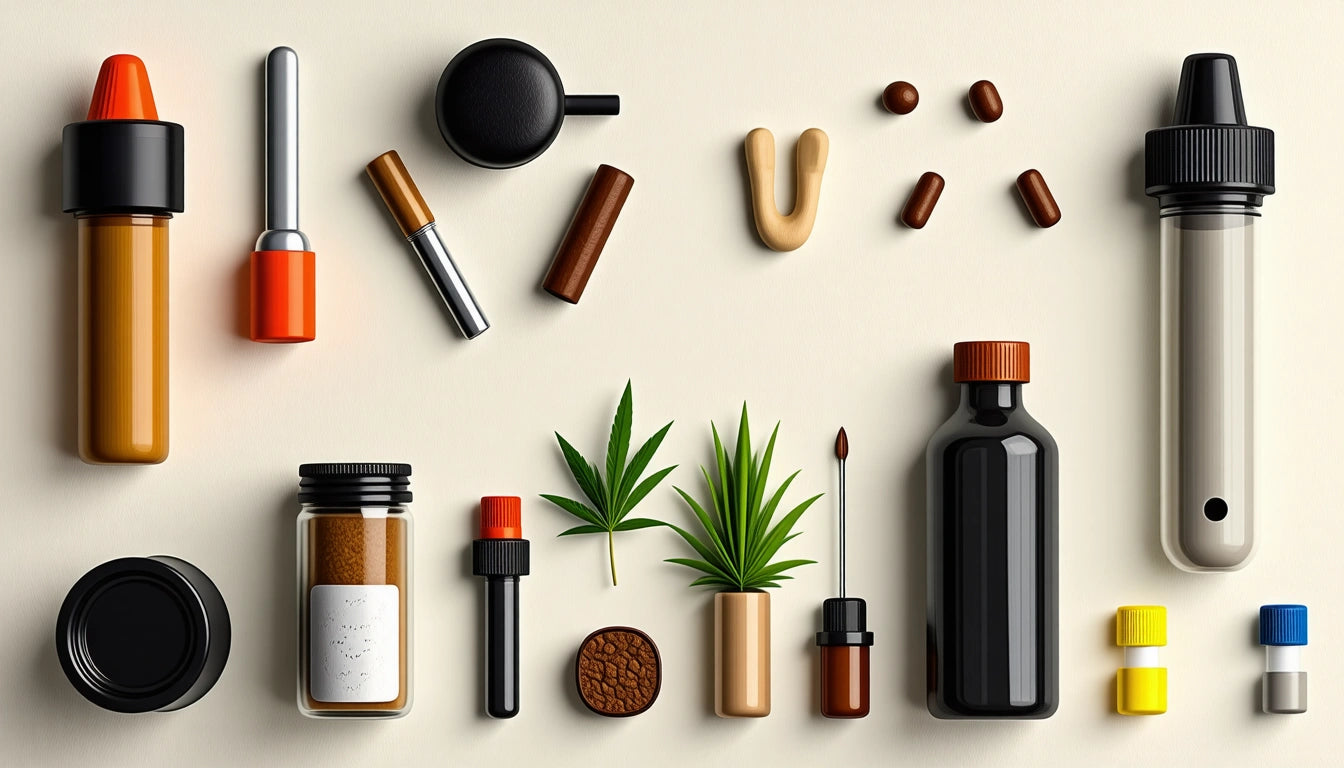
business tips
Easy Steps to Open a Pre-Roll Tube or Container
Table of Contents
Understanding Pre-Roll Packaging
Common Pre-Roll Tube Opening Mechanisms
Opening Plastic Pop-Top Pre-Roll Containers
Glass and Metal Pre-Roll Tube Solutions
Troubleshooting Difficult Pre-Roll Packaging
Accessibility Considerations for Pre-Roll Packaging
Pre-roll tubes and containers are designed to preserve freshness while meeting strict child-resistant requirements. While these safety features protect children, they can sometimes challenge adults trying to access their products. This guide walks you through opening various pre-roll packaging types, ensuring you can enjoy your purchase without frustration.Understanding Pre-Roll PackagingPre-roll packaging comes in various forms, from simple tubes to sophisticated containers with multiple compartments. According to cannabis safety guidelines, most jurisdictions require child-resistant packaging that prevents accidental access by children while remaining accessible to adults.The most common pre-roll containers include:
Push-and-twist plastic tubes
Squeeze-and-pull containers
Slide-top doob tubes
Pop-top containers
Screw-top glass tubes
Each design serves the dual purpose of preserving your pre-roll while meeting regulatory requirements. Understanding the specific mechanism of your container is the first step to opening it properly.Common Pre-Roll Tube Opening MechanismsPush-and-Twist MechanismThe push-and-twist mechanism is among the most common for pre-roll tubes. To open:
Apply downward pressure on the cap
While maintaining pressure, twist the cap counterclockwise
Once the cap aligns with the release point, it will lift off
This design is popular because it effectively meets child-resistant requirements while remaining relatively intuitive for adults. If you're having trouble, ensure you're applying sufficient downward pressure before attempting to twist.Squeeze-and-Pull ContainersAnother common design requires a squeeze-and-pull motion:
Locate the textured or marked areas on the sides of the container
Squeeze these areas firmly between your thumb and fingers
While squeezing, pull the cap upward
These containers can be challenging for those with limited hand strength. If you're struggling, try placing the container on a flat surface and using both hands to squeeze the sides while pulling up with your thumbs.Highlight: Most pre-roll tubes require a combination of actions to open, typically involving pressure application plus another motion like twisting or pulling.Opening Plastic Pop-Top Pre-Roll ContainersPop-top containers are increasingly popular for pre-rolls due to their convenience. To open a pop-top container:
Hold the container securely in one hand
Press down firmly on the marked area of the lid
The opposite end will pop up, allowing access
Some pop-top designs require pressing on one side rather than the center. Look for arrows or other indicators showing where to apply pressure. These containers are generally considered more accessible for those with dexterity issues, as noted in this guide on pre-roll usage.Glass and Metal Pre-Roll Tube SolutionsPremium pre-rolls often come in glass or metal tubes with screw-top or cork closures:Screw-Top Glass Tubes
Hold the body of the tube firmly
Twist the cap counterclockwise until it releases
Some designs may have a slight push-down requirement before twisting
Cork-Sealed Glass Tubes
Hold the glass tube securely
Gently wiggle the cork while pulling upward
If tight, use a bottle opener or similar tool to carefully pry the cork
Glass and metal containers often focus on aesthetic appeal and reusability rather than strict child-resistance. When preparing to enjoy your pre-roll, you might want to use quality grinding equipment for the best experience if you're planning to roll your own in the future.Troubleshooting Difficult Pre-Roll PackagingIf you're still struggling to open your pre-roll container:
Check for directional arrows or instructions printed on the packaging
Try a different grip position, sometimes holding the container differently provides better leverage
Ask for a demonstration at the dispensary when purchasing
Look for online tutorials specific to your container brand
For particularly stubborn containers, some consumers keep tools handy, such as rubber grip pads or jar openers. However, using excessive force is not recommended as it may damage the container or the pre-roll inside.According to experts in pre-roll preparation, maintaining the integrity of your pre-roll's packaging helps preserve freshness and potency. Therefore, learning the proper opening technique is worth the initial effort.Accessibility Considerations for Pre-Roll PackagingWhile child-resistant packaging is necessary for safety and compliance, it can present challenges for consumers with limited dexterity, arthritis, or other physical limitations. Some brands now offer accessible packaging options that remain compliant while being easier to open.If you consistently struggle with pre-roll containers:
Ask your dispensary about accessible packaging options
Consider transferring pre-rolls to a personal, accessible container once at home
Look for brands that prioritize universal design in their packaging
The cannabis industry continues to innovate in packaging design, seeking the balance between regulatory compliance and user accessibility. As you become familiar with different container types, you'll likely develop preferences for those that best suit your needs and abilities.Understanding how to properly open your pre-roll container ensures you can enjoy your product without damaging it. Whether you're new to pre-rolls or simply encountering a new packaging design, patience and proper technique will help you access your purchase with minimal frustration. For more information on enjoying pre-rolls, check out guides on lighting techniques and proper extinguishing methods.

flower
Everything You Need to Know About Filters for Joints
Table of Contents
Why Use Filters for Joints?
Types of Joint Filters Available
How to Make a Filter for a Joint
Best Filters for Joints: Materials and Brands
Filter Alternatives and When to Skip Them
Proper Usage and Maintenance of Joint Filters
Future Innovations in Joint Filter Technology
Joint filters, also known as crutches or tips, have become an essential component for many cannabis enthusiasts. These small but mighty accessories can dramatically improve your smoking experience, but questions persist about their necessity, construction, and benefits. This comprehensive guide covers everything from the basics of joint filter tips to advanced techniques for optimizing your smoking experience.Why Use Filters for Joints?Many newcomers wonder, "do you need a filter for a joint?" While not strictly necessary, filters offer several significant advantages:
Improved structural integrity, preventing the end from collapsing or getting soggy
Better airflow for smoother, more consistent hits
Prevention of small cannabis particles from entering your mouth ("Scooby snacks")
Cooler smoke temperature for a more comfortable experience
Ability to smoke the joint completely without burning fingers
According to experienced joint rollers, filters also provide a convenient handling point, making the overall smoking process more enjoyable and waste-free.Types of Joint Filters AvailablePaper FiltersThe most common type, paper filter tips for joints are typically made from thin cardstock. These are affordable, biodegradable, and easy to work with. Many rolling paper packs include filter tips, making them readily accessible for most users.Glass TipsFor those seeking a premium experience, glass tips offer several benefits including improved cooling, reusability, and enhanced flavor preservation. While more expensive initially, their durability makes them cost-effective over time.Activated Carbon FiltersThese specialized filters contain activated charcoal to filter out more toxins and particulates. They're ideal for health-conscious consumers looking to reduce potential harms associated with smoking.Highlight: While you don't absolutely need filters for joints, using them significantly improves the smoking experience by providing better structure, preventing waste, and keeping plant matter out of your mouth.How to Make a Filter for a JointLearning how to make a filter for a joint is straightforward and requires minimal materials:Materials Needed
Thin cardstock (business cards, playing cards, or dedicated filter tips)
Clean, flat surface
Steady hands
Step-by-Step Process
Cut or tear a strip of cardstock approximately 0.75 inches wide and 1.5-2 inches long
Make a few accordion-style folds at one end (creating a "W" or "M" shape)
Roll the remaining cardstock around these folds to create a cylindrical shape
Adjust the tightness to match your desired airflow
Place at the end of your rolling paper before adding ground cannabis
For those concerned about safety, especially in households with children, it's worth noting that proper storage of all cannabis products is essential. Many consumers use specialized containers with child-resistant features to keep both raw materials and finished joints secure and inaccessible to minors.Best Filters for Joints: Materials and BrandsWhen considering the best filters for joints, several factors come into play including material quality, design, and personal preference:Top Paper Filter Brands
RAW: Industry standard with various sizes and thicknesses
Elements: Rice paper-based for minimal flavor interference
OCB: Durable with excellent structural integrity
Premium Glass Tip Options
ROOR: Known for quality borosilicate glass construction
Marley Natural: Elegant designs with excellent functionality
Pulsar: Affordable entry-level glass tips
As noted by cannabis enthusiasts who have mastered joint-smoking techniques, the best filter is ultimately the one that matches your personal smoking style and preferences.Filter Alternatives and When to Skip ThemWhile filters offer numerous benefits, there are situations where alternatives might be preferred or where going filterless makes sense:When Filters Might Be Optional
When using very high-quality, clean cannabis with minimal stem fragments
For certain traditional rolling styles like tulips or crosses
When sharing in a large rotation where simplicity is valued
If you find yourself without filter tips, creative alternatives can be fashioned from common household items like thick paper, thin cardboard, or even certain natural materials.Proper Usage and Maintenance of Joint FiltersTo maximize the benefits of joint filters:For Disposable Filters
Ensure the filter is firmly in place before lighting
Adjust if it begins to loosen during smoking
Dispose of properly after use
For Reusable Glass Tips
Clean after each use with isopropyl alcohol
Allow to dry completely before next use
Store in a protective case to prevent breakage
Proper maintenance not only extends the life of reusable filters but also ensures a clean, flavorful experience with each use. For those who enjoy concentrates, filters become even more important when incorporating wax into joints to prevent melted material from reaching your lips.Future Innovations in Joint Filter TechnologyThe cannabis accessory market continues to evolve, with several exciting developments in filter technology:
Biodegradable filters made from hemp and other sustainable materials
Ceramic tips that combine durability with excellent heat resistance
Adjustable filters that allow users to customize airflow on demand
Integrated cooling systems for smoother hits
As cannabis consumption becomes more mainstream, we can expect continued innovation in filter design focusing on health, convenience, and environmental sustainability. For now, whether you choose pre-made filter tips or learn to craft your own, incorporating filters into your joint-rolling routine represents a simple yet effective way to enhance your cannabis experience.Remember that proper storage is just as important as proper rolling technique. After crafting the perfect filtered joint, proper storage methods will ensure it remains fresh and ready for when you need it.

business tips
Age Requirements for Purchasing Cones: What You Need to Know
Table of Contents
Legal Age Requirements for Purchasing Cones
State and Local Variations in Age Restrictions
Tobacco vs. Hemp Cones: Different Rules?
Retailer Policies and Enforcement
Age Verification for Online Cone Purchases
Legal Considerations Beyond Age Requirements
Understanding how old you have to be to buy cones is essential for both consumers and retailers in the smoking accessories market. With varying regulations across states and different types of products, navigating the legal landscape can be confusing. This comprehensive guide breaks down the age requirements for purchasing cones and what factors influence these restrictions.Legal Age Requirements for Purchasing ConesThe federal minimum age to purchase tobacco products, including many smoking accessories like cones, is 21 years old in the United States. This change came after the passage of the "Tobacco 21" legislation in December 2019, which raised the minimum age from 18 to 21 nationwide.This federal law applies to:
Tobacco-based cones
Rolling papers marketed for tobacco use
Smoking accessories sold in tobacco shops
Products marketed as tobacco accessories
The answer to "can you buy cones at 18" is generally no for tobacco-related products due to this federal legislation. However, there are some nuances depending on the specific type of cone and where you're purchasing it.State and Local Variations in Age RestrictionsWhile the federal minimum age is 21, some states and localities may have additional regulations that affect cone purchases:State-Specific RulesSome states had already implemented Tobacco 21 laws before the federal change. Others may have specific regulations regarding certain types of smoking accessories. It's important to check your local laws, as some jurisdictions classify certain products differently.When exploring where to purchase cones, understanding these local variations becomes crucial to ensure compliance with regional regulations.Highlight: The legal age to purchase smoking accessories like cones is 21 in most places throughout the United States, regardless of whether they're intended for tobacco or other herbs.Tobacco vs. Hemp Cones: Different Rules?One common question is whether do you have to be 21 to buy cones if they're made from hemp rather than tobacco. The distinction can be important:Hemp-Based ConesHemp cones, which have become increasingly popular, fall into a somewhat gray area in some jurisdictions. While not technically tobacco products, most retailers still apply the 21+ age restriction to hemp cones because:
They're often sold alongside tobacco products
They're typically marketed as smoking accessories
Retailers prefer to maintain consistent age policies
Marketing and Intended UseHow products are marketed can affect their classification. Products explicitly marketed for tobacco use clearly fall under Tobacco 21 laws. Those marketed for CBD or other legal herbs may have different regulations in some areas, but most retailers err on the side of caution with age verification.For those interested in tobacco cones, the age restriction is consistently 21 years or older nationwide.Retailer Policies and EnforcementRetailers often implement their own policies that may be stricter than local laws require:In-Store PurchasesPhysical stores typically check ID for anyone who appears under 30 when purchasing smoking accessories. When looking for where to purchase RAW cones or similar products, expect to have your ID checked regardless of the specific type of cone.Consequences of Non-ComplianceRetailers face significant penalties for selling to underage customers, including:
Fines (often thousands of dollars)
Loss of tobacco selling licenses
Potential criminal charges for repeat offenders
This explains why most stores have strict age verification processes when selling smoking accessories like cones and even complementary products like herb grinding equipment that help prepare materials for use in pre-rolled cones.Age Verification for Online Cone PurchasesPurchasing cones online comes with its own set of age verification procedures:Verification MethodsReputable online retailers use various methods to verify customer age:
Credit card verification (must be 18+ to own a credit card)
ID upload requirements
Third-party age verification services
Age attestation checkboxes (though these alone are insufficient)
When purchasing products like those mentioned in guides to pre-rolled cones, expect to encounter some form of age verification during checkout.Shipping and DeliverySome delivery services require ID verification upon delivery for smoking accessories, similar to alcohol deliveries. This provides an additional layer of age verification beyond the initial purchase.Legal Considerations Beyond Age RequirementsUnderstanding the broader legal context around smoking accessories is important:Intended UseWhile cones themselves may be legal to sell and possess, their intended use matters legally. Products marketed for use with controlled substances may face different regulations. This is why many products are labeled "for tobacco use only."Learning how to properly pack cones and understanding their legal uses is important for responsible consumption.Future Regulatory ChangesAs cannabis legalization expands across states, regulations around smoking accessories continue to evolve. While the federal age minimum of 21 is unlikely to decrease, how products are classified and regulated may change over time.For retailers and consumers alike, staying informed about pricing and usage guidelines is just as important as understanding the legal age requirements for purchasing these products.
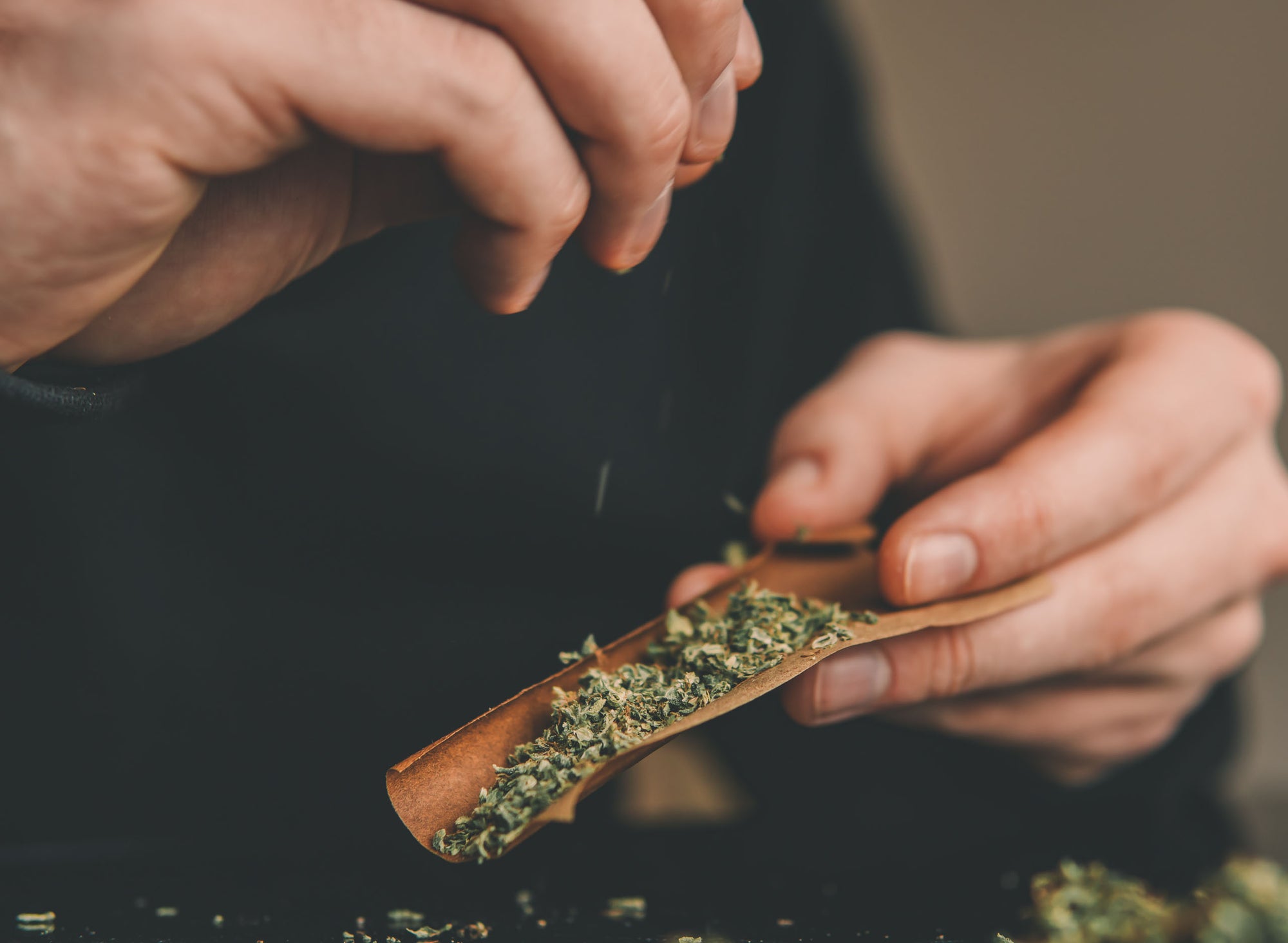
flower
Mastering the Art of Rolling with RAW Papers: Tips, Techniques, and Products
Table of Contents
Why RAW Papers Are the Gold Standard
Essential RAW Products for Perfect Rolls
Basic Rolling Technique with RAW Papers
How to Roll with RAW Papers with Filter
How to Roll with RAW Papers No Filter
Common Rolling Mistakes and How to Avoid Them
Advanced Rolling Techniques for Enthusiasts
Rolling Innovations and Future Developments
nnMastering the Art of Rolling with RAW Papers: Tips, Techniques, and ProductsnnRAW rolling papers have earned their iconic status among enthusiasts for good reason. Their natural, unbleached composition and commitment to purity have made them a go-to choice for those who appreciate quality rolling materials. Whether you're new to rolling or looking to perfect your technique, this comprehensive guide will help you master the art of rolling with RAW papers.nnWhy RAW Papers Are the Gold StandardnnRAW classic rolling papers stand out in the market due to their unique characteristics. Made from unrefined plant fibers and free from artificial additives, these papers burn slowly and evenly while preserving the natural taste of your material. As outlined in this detailed resource on RAW papers composition, the brand's commitment to natural ingredients has contributed significantly to their popularity.nnThe thin, translucent quality of RAW papers makes them ideal for rolling enthusiasts who want to minimize paper taste and maximize the flavor of their herbs. Their slight tan color comes from the natural, unbleached fibers, distinguishing them from bleached white papers on the market.nnEssential RAW Products for Perfect RollsnnBefore diving into rolling techniques, it's important to understand the range of RAW products available:nnn
RAW Classic: The original unrefined paper with a natural light brown appearancen
RAW Black: Ultra-thin papers for connoisseurs, as detailed in this exploration of RAW Black papers
n
RAW Organic Hemp: Made from organically grown hempn
RAW paper roll: Continuous rolls that let you customize your paper lengthn
RAW rolling papers with tips: Convenient packs that include both papers and filter tipsn
RAW papers pre-rolled: Ready-to-fill cones for those who struggle with hand-rollingnnnFor those who prefer convenience without sacrificing quality, we also offer premium pre-rolled cones in various sizes that deliver consistent results every time.nnBasic Rolling Technique with RAW PapersnnLearning how to roll with RAW papers is a skill that improves with practice. Here's a step-by-step guide to the basic technique:nn1. Prepare Your MaterialsnnGather your RAW classic rolling papers, ground material, and a flat surface. If using a filter, have it ready as well.nn2. Create the Paper BednnHold the paper with the gum strip facing up and away from you. Evenly distribute your ground material along the crease of the paper, leaving space at both ends (or just one end if using a filter).nn3. Shape and TucknnUsing both thumbs and index fingers, gently rock the paper back and forth to shape your material into a cylindrical form. Once shaped, tuck the non-adhesive edge of the paper under your material with your thumbs.nn4. Roll and SealnnContinue rolling upward until only the adhesive strip is visible. Lick the gum strip lightly and complete the roll by sealing from one end to the other.nnHighlight: The key to a perfect roll with RAW papers is patience and even distribution of material. Don't rush the tucking phase, as this sets up the entire structure of your roll.nnHow to Roll with RAW Papers with FilternnMany enthusiasts prefer using filters (also called tips or crutches) for a more structured smoking experience. Here's how to roll with RAW papers with filter:nn1. Prepare the FilternnTake a RAW filter tip and make a few accordion-style folds at one end before rolling the remaining portion around these folds to create a cylindrical shape. As explained in this guide on RAW papers and filters, proper filter preparation is crucial for airflow.nn2. Position the FilternnPlace the filter at one end of the rolling paper before adding your ground material.nn3. Roll as NormalnnFollow the standard rolling technique, but pay special attention to keeping the filter aligned as you roll. The filter should guide your rolling action.nn4. Secure the FilternnAs you seal the paper, make sure the filter is snug but not too tight. It should be secure enough that it won't fall out but allow proper airflow.nnHow to Roll with RAW Papers No FilternnSome purists prefer rolling without filters. If you're wondering how to roll a RAW paper no filter, here are some tips:nn1. Distribute CarefullynnWhen learning how to roll with RAW papers no filter, pay extra attention to material distribution, ensuring it's slightly less dense at the mouthpiece end.nn2. Create a Pinched EndnnAs you roll, pinch the mouthpiece end slightly to prevent loose material from entering your mouth.nn3. Twist Both EndsnnAfter rolling, twist both ends gently to secure the material inside. The end you'll light can be twisted more firmly than the mouthpiece end.nnCommon Rolling Mistakes and How to Avoid Themnnn
Overfilling: Using too much material makes rolling difficult. Start with less than you think you need.n
Uneven Distribution: Take time to distribute material evenly for a consistent burn.n
Loose Rolling: If your roll is too loose, it will burn unevenly and quickly.n
Over-licking: Excessive moisture on the gum strip can damage the paper. A light lick is sufficient.n
Using the Warning Paper: Many wonder, "can you roll with the warning paper RAW includes?" While technically possible, it's not recommended as it lacks adhesive and isn't designed for smoking.nnnAdvanced Rolling Techniques for EnthusiastsnnOnce you've mastered basic rolling, you might want to explore more advanced techniques:nnUsing a RAW Rolling MachinennFor consistent results, consider using a rolling machine. This guide on using RAW rolling machines provides detailed instructions for achieving perfect cylindrical rolls every time.nnExploring RAW Paper Roll OptionsnnRAW paper rolls offer flexibility for custom-sized rolls. Simply tear off your desired length and roll as normal. This option is economical for frequent rollers and allows for personalization based on preference or occasion.nnRolling Innovations and Future DevelopmentsnnThe world of rolling papers continues to evolve with new products and techniques. From diverse RAW paper types to innovative accessories, staying informed about the latest developments can enhance your rolling experience.nnWhether you prefer the traditional hand-rolling method or opt for the convenience of pre-rolled solutions, mastering the art of rolling with RAW papers is a rewarding skill that improves with practice. By understanding the products, techniques, and common pitfalls, you'll be well on your way to creating perfect rolls every time.

